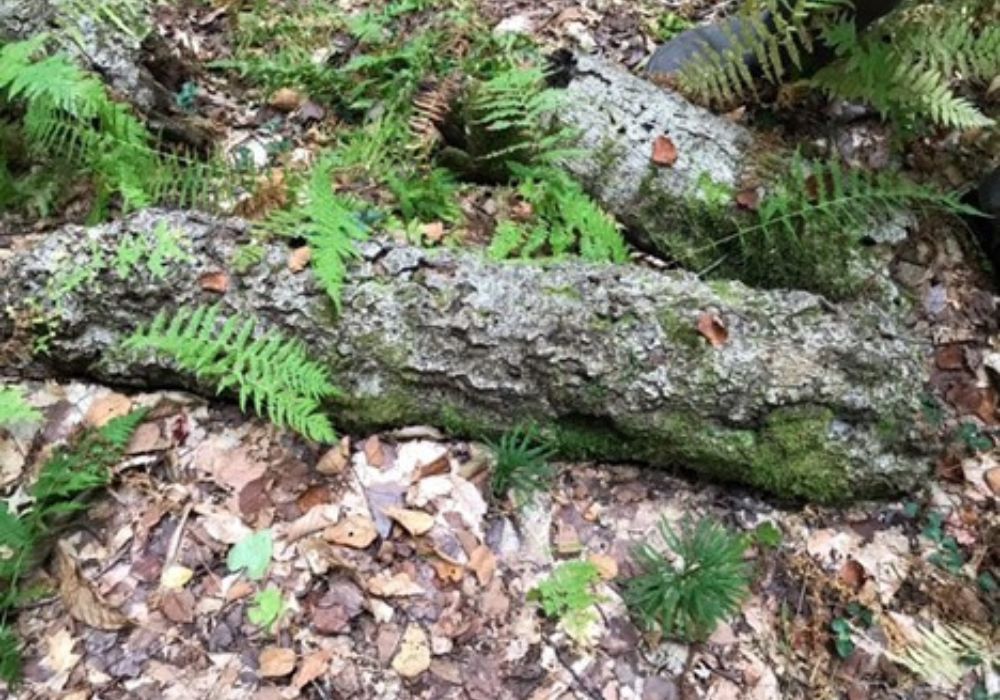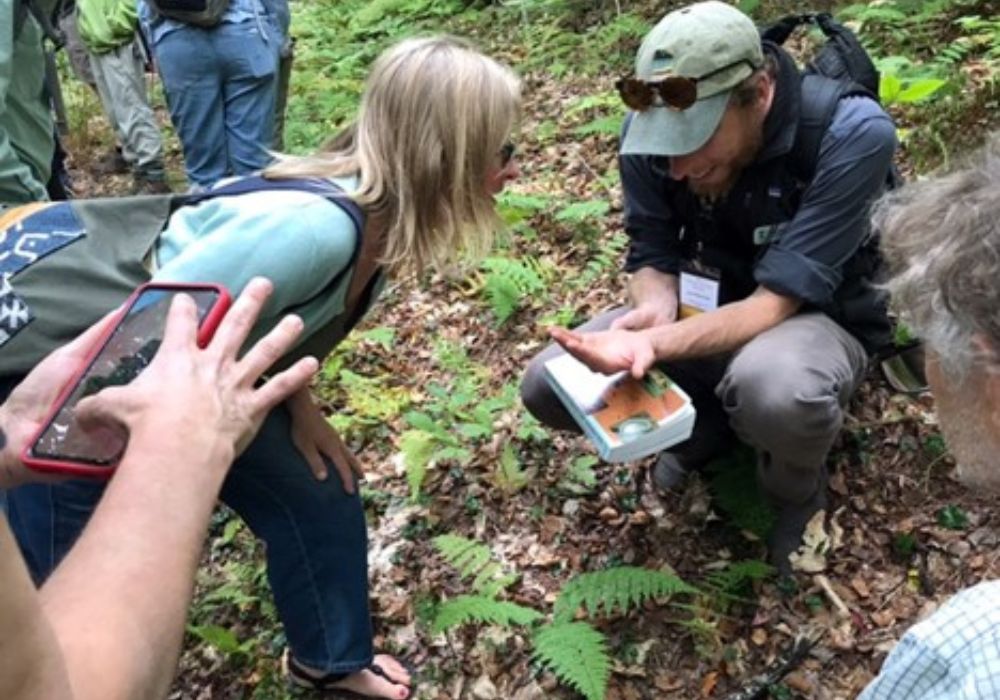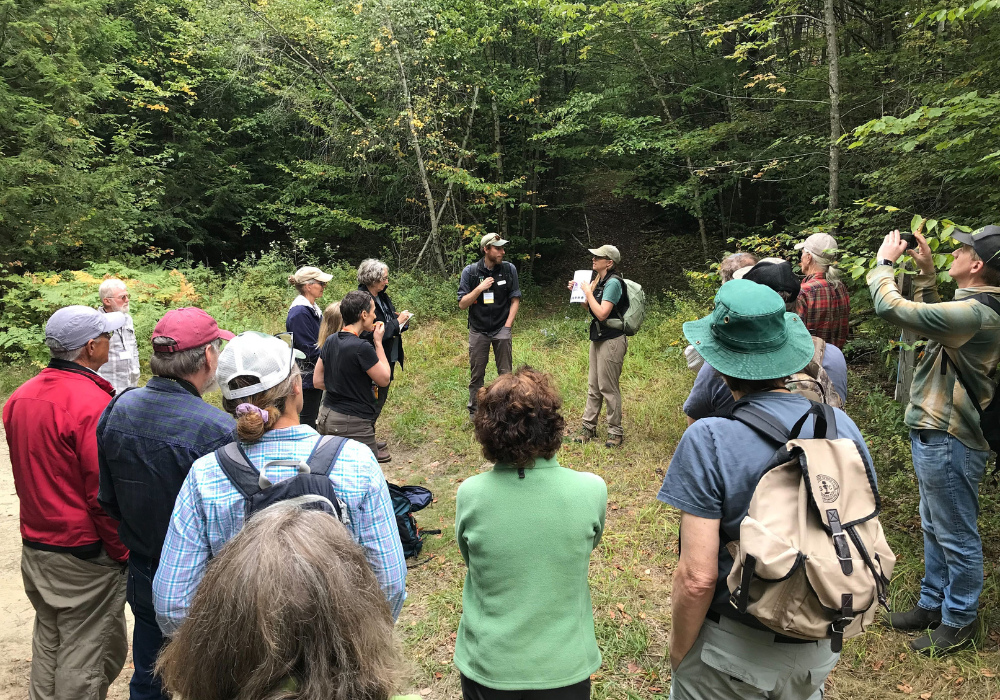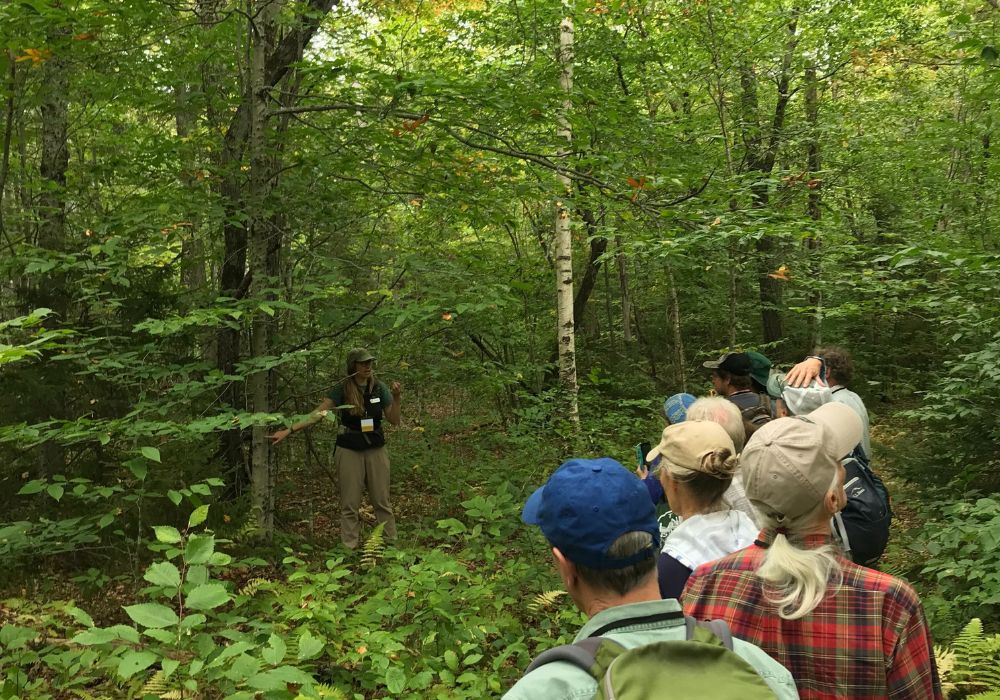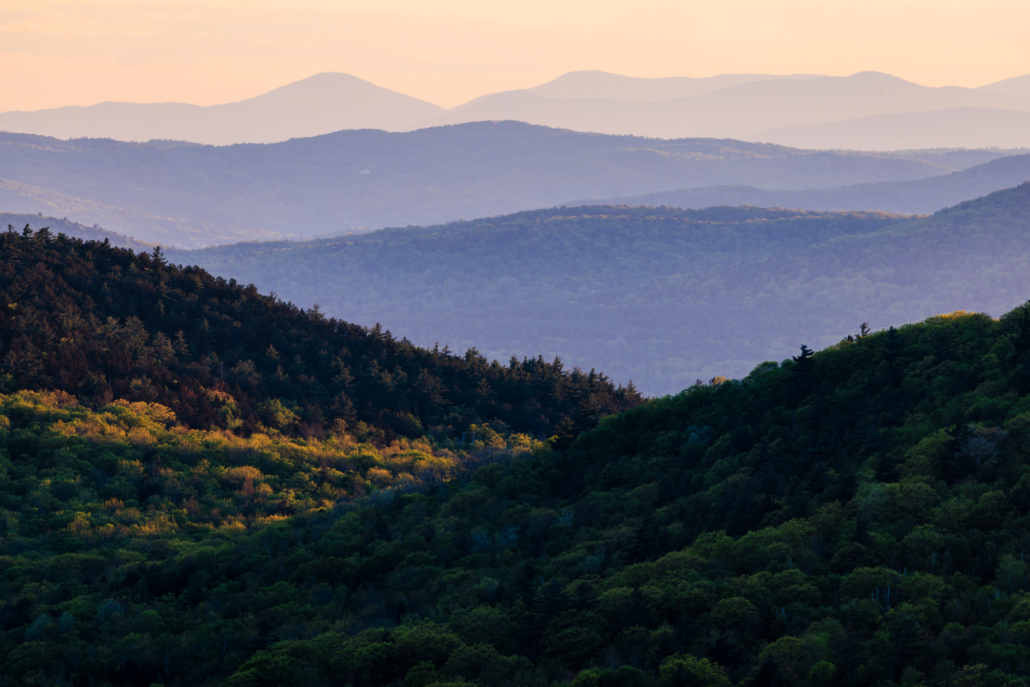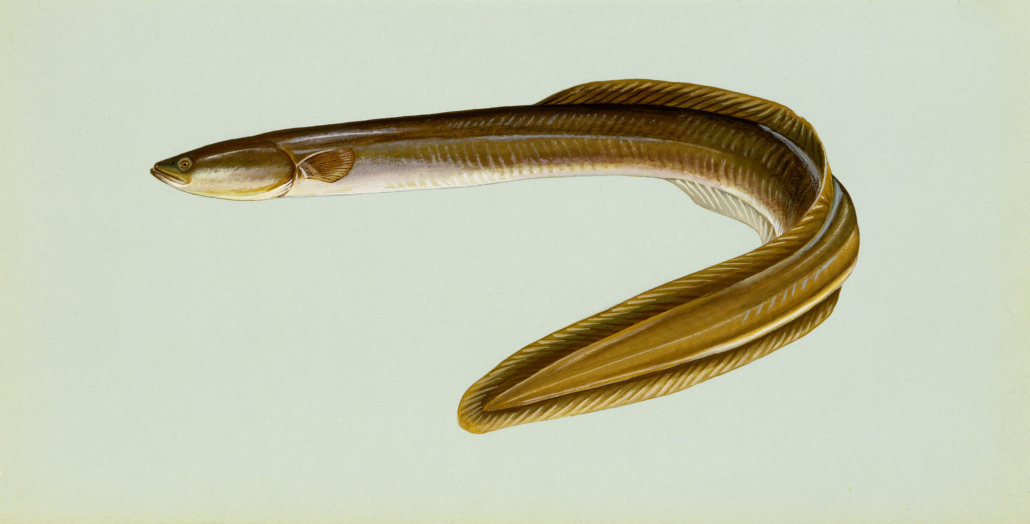On Wednesday, the conference’s opening day, NEWT’s Wildlands Ecology program narrowed the aperture to focus on these little things during a walking workshop titled “Small Wonders: Biodiversity is Bigger than the Big Stuff.” Wildlands Ecology Director Shelby Perry and Wildlands Ecologist Jason Mazurowski encouraged attendees to direct their attention to the forest floor, where with the right perspective, fungi, insects, and mosses can dazzle and delight.
Participants needed to look no further than a tiny slime mold for evidence of the wonders that abound in the microscopic. Perry knelt down at a piece of fallen tree trunk beside the trail—a “nurse log,” according to Mazurowski, so-named for how such logs act as “islands of biodiversity” and nurseries for countless organisms—and plucked from it a moss-covered twig. She passed the twig around the group, who used hand lenses to magnify the tiny but intricate black bubbles clustered on one of the twig’s ends: black raspberry slime mold. “Oohs” and “aahs” followed the twig in its rounds.
“It looks like something out of an art museum catalogue,” one observer noted, which prompted a wave of agreeing nods. “It’s so beautiful.”
Slime molds may not be specific to old-growth forests—but they’re among the tens of thousands of species that rely on the “messiness” typical of old, unmanaged forests where trees can fulfill all their ecosystem functions, in life and in death.
This amounts to a kind of ecological freedom that, according to NEWT President and CEO Jon Leibowitz in a plenary address on the conference’s second day, “is perhaps the greatest factor determining whether a young forest today becomes the old-growth forest of tomorrow.”
Leibowitz, who was given the Old-Growth Forest Network’s Forest Advocate Award before his address, explained that this freedom is a commonality across wildlands and old-growth forests. Whereas the ebb and flow of life on managed forests is mediated by human intervention, wild forests are shaped by natural processes. In places like NEWT’s Howland Research Forest in Maine or Woodbury Mountain Wilderness Preserve in central Vermont, where Nature can heal via passive rewilding, forests can become “what a forest in New England wants to be,” Leibowitz said, rather than what humans wish for them. This recognizes that both forests and the species that inhabit them “have a right to live and flourish regardless of any use to humans”—a core principle of NEWT’s conservation ethos.
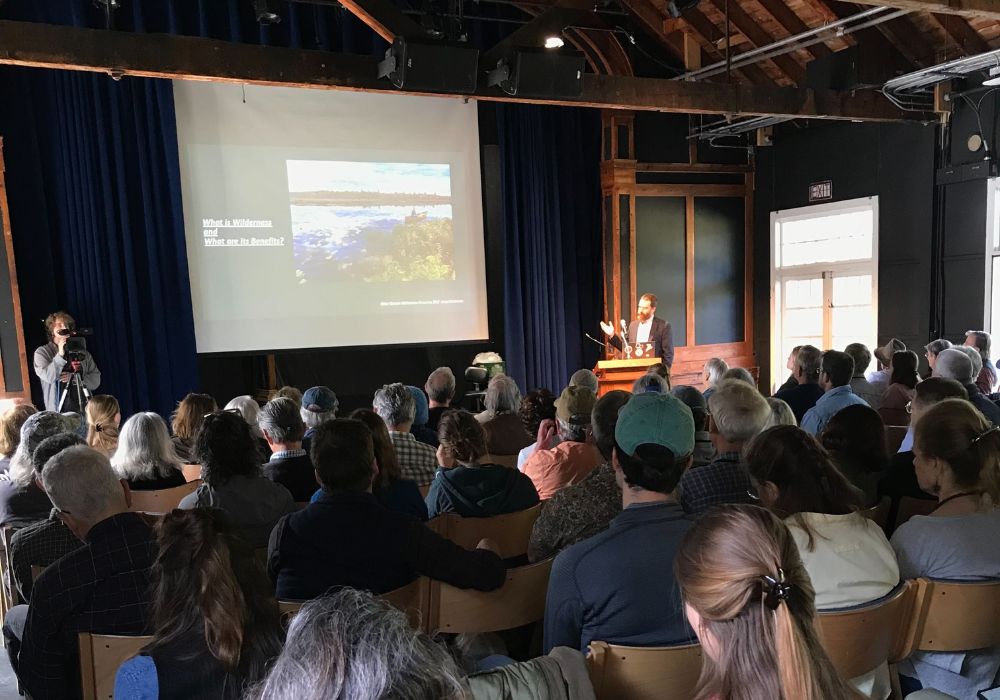
But less than 4 percent of New England’s land enjoys the freedom to grow old and reach its full ecological potential. And even among these meager wildlands, there is uneven biological representation: Some forest types are overrepresented and others underrepresented among protected wildlands. High-elevation ecosystems in northern New England, for example, make up the lion’s share of wildlands in the region, while lowland environments, which tend to be closer to human population centers, lag far behind their alpine counterparts.
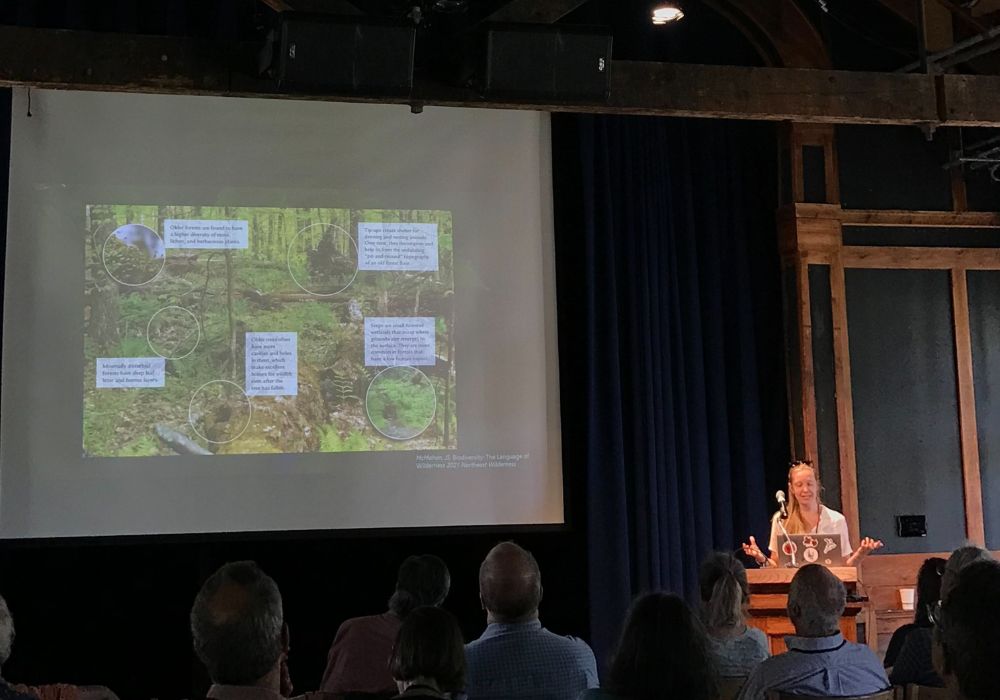
This imbalance has been mapped by Perry and Mazurowski, who with several colleagues presented their research findings on the conference’s second day. Their takeaways offer guidance to conservation planners as they seek to ensure that the diversity of the Northeast’s natural communities is reflected in wildlands inventories. In Vermont, for example, implementation of the state’s conservation framework, Vermont Conservation Design (which Perry and others at the conference helped create), will benefit from a more detailed understanding of which ecoregions deserve prioritization in land protection efforts.
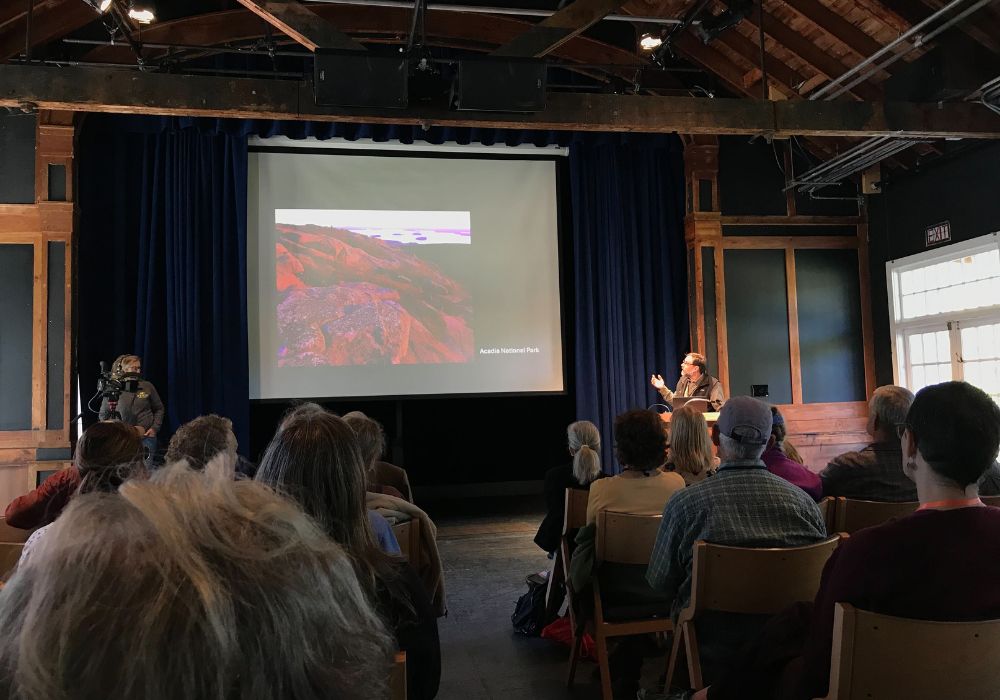
The result is that today, much of the Northeast’s remaining old-growth forests persist on federal and state land. But as land trusts like NEWT lead the charge to protect more private wilderness, a new chapter is being written in U.S. wilderness history.
Wildlands and old-growth forests remain far too sparse in the Northeast. The Northeastern Old Growth Conference underscored that whether from an ecological, spiritual, or political perspective, this dearth has far-reaching implications for human and nonhuman communities alike. But the conference did not dwell on the magnitude of the challenge: It showcased the rich variety of practitioners, scientists, activists, and artists rowing together, in their respective but related endeavors, toward a shared goal of a Northeast graced by extant old-growth forests and those of the future, developing today on wildlands protected by Northeast Wilderness Trust and other partners.


